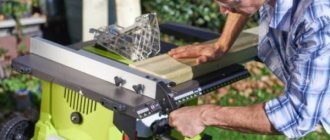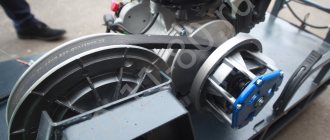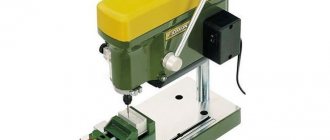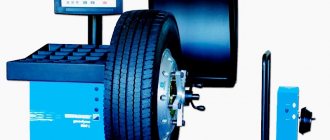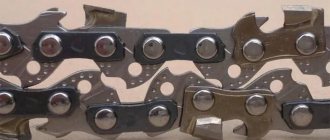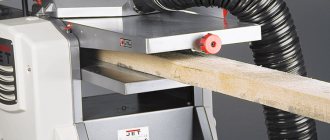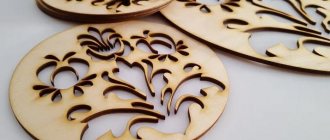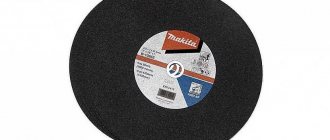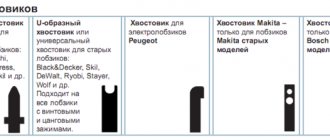In order to cut glass, wood, steel and other materials as accurately and accurately as possible, special equipment is used. Today, laser machines are considered to be the most effective and modern devices. Initially, they had an exclusively industrial scope of application, but at the moment they can also be used in a household workshop.
Laser cutting is a method of cutting material, during which a focused, powerful laser beam burns through the surface of the workpiece being processed. Due to its small thickness, special directional angle, coherence and monochromaticity, the laser beam evenly cuts the material, and during this process a minimum of waste is generated, which is then blown out with a stream of air.
Due to its increased accuracy, laser cutting significantly speeds up and simplifies the processing of various workpieces, while creating a minimum of defects and waste. The increased demand for such equipment is not surprising, because due to the increased productivity, the high cost of the machine will pay off quite quickly and with interest.
Burning the workpiece directly eliminates contact with its working surface. From this it is clear that it is possible to process not only hard alloys (brass and copper, aluminum and steel), but also rather fragile raw materials, for example, wood or plywood, as well as glass. Its almost complete automation adds greater efficiency to the entire process. It is already difficult to imagine a modern laser machine without CNC, and its computer control has become commonplace today.
Laser machines: general information
They are professional equipment whose operation is highly accurate. The device is equipped with a powerful laser that easily cuts through surfaces and separates them into individual elements. The resulting cut is particularly smooth and does not require an additional processing step. Also, with the help of such machines it is convenient to carry out engraving, cut out various patterns and even weld small parts.
Device and working elements
Externally, the design is not particularly complex and consists of:
- Coordinate table - it is responsible for the final quality of the manufactured product. There is a housing on it, on which movable guide parts are placed. Ball screws or toothed belts can be used as a drive. Metal laser machines additionally use another control element – a controller.
- “Flying” optics - it consists of a set of mirrors, each of which is coated with a special composition that reduces the dispersion of the energy beam. There is also a lens installed there, which is responsible for focusing the beam into a small spot with a diameter of no more than 2/10 mm.
- Laser lamps - it is the main emitting element (usually sealed glass variations are used). The radiation that is reflected from the mirror optics and subsequently focused by the lens does the main work - burning.
- Additional devices - usually these include an air compressor and the main cooling system.
The lens is the main working element
Through it, the beam generated by the lamp is focused and directed towards the material being processed. Different lenses have different focal lengths, focal depths (responsible for the maximum thickness of the section), and the diameter of the focused spot. There are long-focus (+100 mm), medium-focus (up to 50 mm) and short-focus lenses (up to 38 mm). As the name implies, they differ in the length of the focusing distance. Thus, long throw ones are able to efficiently cut through thick and hard surfaces (metal), while others can efficiently produce precise work. According to the current classification, each lens variation is used for its own type of work:
- Short-focus - they do an excellent job of engraving and cutting out detailed objects (for example, stamps), and they are also convenient for cutting materials of low density (plywood, chipboard, plexiglass);
- Mid-focus ones are often called the “golden mean”, because they are capable of high-quality engraving and cutting through medium-density workpieces up to 8 mm (this thickness can be compared with the density of wood);
- Long-focus lenses are perfect for working with thick materials (in addition to standard metals, we can mention acrylic and wood with a thickness of up to 250 mm).
The lenses themselves can be made on the basis of various bases, the most popular of which are gallium arsenide and zinc selenide. It is worth noting that the first ones belong to industrial designs and are used in machines with a power of more than 130 Watts.
Operating principle and device
Laser machines equipped with CNC are gaining popularity in the global market. This is due to lower prices for equipment and the emergence of new models. To understand how this equipment works, you should study its design:
- computer numerical control;
- emitter head;
- mobile portal;
- Desktop;
- bed.
These are the main pieces of equipment. The emitter head is fixed to the mobile portal. It moves using an electric motor mounted on guides. It is controlled by CNC.
The laser head is worth considering separately. The design consists of a focusing mechanism, reflector mirrors, focusing lenses and an emitter head.
There are two types of work carried out using a laser machine. The first is to engrave the surface. Thanks to this, it is possible to engage in decorative finishing of objects. Metal sheets are also cut using a laser according to customer dimensions. The cut is highly accurate.
The main stages of operation of a laser machine
First, a special drawing is prepared, where the coordinates of the required cuts are indicated - this drawing is loaded into the operating program of the machine. After which, the actual working process begins: the machine automatically directs the beam to a given place and produces strong heating. Glass and metal melt under the influence of elevated temperatures, and wood burns out. In a strictly designated place, the surface to be processed is precisely cut in accordance with the specified parameters.
Advantages and disadvantages of laser cutting
The undoubted advantages are the following:
- Laser cutting is capable of processing a variety of materials;
- The absence of direct mechanical contact virtually eliminates the risk of damage to the surface being treated;
- The machine can perform work of any degree of complexity, while obtaining perfectly even cuts and lines is guaranteed;
- The work performed is characterized by high productivity and speed;
- The process itself is carried out silently, there is no large amount of dust and debris.
The disadvantages of working with a laser include:
- The stamping method of processing workpieces is much cheaper than the laser method;
- When processing wooden surfaces, dark traces remain at the points of contact with the laser spot;
- The laser machines themselves (especially industrial designs) are very expensive;
- There are restrictions on the thickness of the working surface of materials.
The range of products that can be produced on a laser machine is very wide; the unit is perfect for manufacturing:
- Various stencils and plywood blanks;
- Metal constructors and their individual elements;
- Seals and stamps;
- Street signs and road signs;
- Designer cards;
- Engraved souvenir items;
- Decorative elements containing carved patterns;
- Decorations and screens;
- Layouts for architectural projects and much more.
Machine Application Options
Laser equipment for working with metal opens up many areas for the manufacturer to develop their own business and can significantly increase the productivity of the enterprise in terms of manufacturing various products.
With the help of such equipment you can move in the following directions:
- Making souvenirs and decorating various metal objects.
- Production of signets and stamps.
- Cutting metal sheets and blanks to customer sizes.
- Manufacturing of equipment for the food industry.
- Engraving of surfaces.
Laser engraving is considered a priority when using this equipment. This is due to the high speed of work.
Technical characteristics of the main types of laser systems
Depending on the material being processed, they can be divided into:
- Solid-state lasers of the pulse-periodic type with lamp pumping (output power: 50 – 1000 Watts) are used for cutting thick metals;
- DPSS diode-pumped solid-state lasers are used for medium-thick metals;
- Continuous gas infrared CO2 lasers (output power up to 400 Watt) are used to work with non-metallic workpieces (rubber and polymers, as well as wood);
- Continuous gas CO2 lasers (output power - from 0.7 to 6 Kilowatts) are suitable for working with alloy steel, ferrous metals, some types of metal alloys, as well as for non-metallic materials;
- Fiber optic lasers (output power from 0.4 to 15 Kilowatts) – for spot cutting.
At the moment, the use of laser equipment cannot completely displace classical metal cutting methods from the market. Therefore, their effective use becomes possible only when the material being processed is selected correctly, based on the capabilities of the equipment, and when using the traditional method becomes labor-intensive or completely impossible.
Which laser engraver is better?
The review presents different types of models, which laser engraver should you choose for your activity? You need to choose equipment taking into account the field of activity, the material being processed, and productivity. The VyborExperta.ru team recommends the following models:
- Ortur Laser Master 2 – for home workshops and small businesses;
- Zareff M2 – commercial wood processing;
- Artis 1325 – for cutting sheet metal;
- Yofuly Cnc 3018 Pro Max – for learning technology.
All the models presented in the review are worthy of the attention of amateurs and professionals, but only the most efficient and functional devices were awarded the title of the best machines in their classes.
Existing types of laser machines
This equipment can have both universal and specialized purposes. However, all equipment is usually divided by power and size:
- The desktop device has low power (less than 80 watts);
- The professional one already has more power (from 80 – 195 Watt);
- Production samples can reach power levels of up to 1000 watts.
Depending on the working environment, lasers can be divided into
- Solid-state - they are equipped with pumping lamps, flash lamps, a working housing and several mirrors;
- Gas - they have an inert gas supply system, as well as a glass flask in which the emitting tube is located;
- Gas-dynamic - they have a special nozzle for accelerated gas supply and an additional cooling system.
Rating of laser engravers
When compiling the review, equipment of varying power and performance was studied. The features of the work, the availability of services and applications, and the quality of engraving on various materials were analyzed. User reviews and opinions of printing professionals were taken into account. The main attention was paid to the following characteristics:
- Power – the performance of the equipment depends on this parameter;
- Processing material – affects the piercing depth;
- Accuracy – the higher, the more complex the displayed pattern;
- Cooling system – increases the time of non-stop operation;
- Control - from the keyboard or using the application;
- The size of the working field affects the productivity and dimensions of the workpiece.
Inconsistency with the declared power indicators, rapid failure, constant overheating, lack of accuracy - machines with such defects were excluded from our rating.
Existing types of machine tables
The work table is one of the main elements in the design of the machine, so the quality of work will directly depend on its choice:
- Slat tables - they are often found in the basic configuration; they are extremely convenient to remove and clean. However, they are poorly suited for processing small parts or for working on fabrics. They are also not at all designed for processing special and thin materials, such as paper or cardboard.
- Honeycomb tables - their coating is very, very suitable for cutting out small elements, because it is very dense and does not allow the workpieces to fall to the floor. It will do an excellent job of cutting thin materials - paper, cardboard, fabric. Unlike lamella tables, the workpiece does not sag on it.
- Conveyor tables - they are specially designed for working with material in rolls, which can include paper and even leatherette. They supply workpieces in a continuous mode, which greatly simplifies the user’s work.
The best laser engravers for metal
The high heat capacity of the material being processed and the reflective ability of its surface impose their own requirements on a CNC laser engraver for metal. The equipment is equipped with fiber energy generators, which have increased power ratings. An alternative solution is to use carbon dioxide, in which the metal is burned.
Artis 1325
The industrial fiber laser engraver is designed for high-precision metal cutting. Equipped with an American-made ytterbium emitter, which provides increased efficiency. It works effectively in an oxygen environment, when high cutting speed is required, and produces good results when cutting without scale in inert gases. The edges are perfect with minimal taper. Allows you to create metal elements with strict corner geometry.
The precision cut has a width of 0.1 mm, heating is narrow-sectional - allows you to create parts of very complex shapes. Equipped with Swiss optical heads specially designed for powerful machines. The height of this unit and focusing are controlled automatically. The water cooling system ensures high work intensity.
Advantages:
- The emitter does not require maintenance and maintains its characteristics for 10 years;
- Quick replacement of head consumables;
- Backlash-free servomotors made in Japan;
- Easy integration into the production line;
- Automatic control of temperature in the working area.
Flaws:
- Not detected.
Alfa 1390
For cutting and perforating steel workpieces in a small enterprise, you can buy an Alfa series metal laser engraver. This is professional equipment that operates on the principles of supplying active gas to the processing zone. The model is equipped with Reci emitters with a power of 150 W. The characteristics of the generator allow you to cut steel 4 mm thick. The equipment provides a smooth and even cut, absence of scale and thermal deformation.
The accuracy of the equipment reaches 2500 dpi, and the speed of movement of the emitter is 50 cm/s. This is ensured by installing YAKO three-phase stepper motors. The presence of a controller with non-volatile memory allows you to use CorelDraw without a control program. The belt drive bearings are made of tool steel, can withstand high loads, and are easily replaced during maintenance.
Advantages:
- Wide linear guides;
- Automatic lifting table;
- The mirror settings are not lost during operation;
- Efficient air pump;
- Precise positioning sensors.
Flaws:
- A rotating device for the cylinder is not included in the basic configuration.
The best laser printers
Approximate order of use
The basic rules for operating the machine are quite simple, but you still need to know the step-by-step order so as not to get confused later:
- First you need to select a pattern that will be cut out;
- Then you should load the image (photo) into the operating program of the device, while simultaneously checking the cleanliness of the working surface of the lens. If contamination occurs, then the lens should be wiped with a cotton swab dipped in alcohol;
IMPORTANT! You cannot wipe the lens with vodka, since the essential oils contained in its composition form a thin film on the lens when it dries, which will lead to scattering of the beam!
- After turning on the unit, you must wait until it warms up;
- Next, you should select a processing method: “raster” for engraving and “vector” for cutting;
- Then you need to determine the width of the line for the cut (it is worth remembering that wide lines take a long time to complete);
- Upon completion of all operations, the process will begin to execute, and the production time will depend on the processing material and the set speed mode.
Some nuances of setting up the device
It is always necessary to remember that a laser installation is a complex technical equipment, so its settings must be extremely accurate. The adjustment is carried out using a light beam and during this procedure the working element is replaced with a conventional laser pointer. The procedure will include the following steps:
- Correction of the laser tube - transparent adhesive tape is glued to the main mirror, and the position of the tube itself is adjusted so that the beam hits directly at its center;
- Then the tape is glued to the second mirror, and the main one is adjusted. As a result, the laser pointer mark should always be in the center, regardless of the distance. The beam direction is changed by turning the screws;
- Next, the third mirror is covered with tape and the above procedure is repeated, but only for the second optical element;
- The third mirror is configured by placing a “target” on the desktop. In this case, the spot size must correspond to the size of the output nozzle. Adjustment is also made using screws.
CNC machine
CNC is a software package that generates control pulses for electric drives. Provides the highest possible accuracy for this equipment.
The photo shows a CNC controlled laser machine
Since we are talking about a laser beam, the accuracy of cutting and drawing lines on a CNC laser machine has no analogues.
Advantage
When cutting with a mechanical tool, part of the material is destroyed - it is selected in the form of chips and dust. Not only is part of the plexiglass lost, but also shavings get clogged into the cutting lines and holes, thereby making work much more difficult.
The laser processing method does not have all these disadvantages.
- Minimum material consumption - the thickness of the cutting line can be 0.1 mm. The losses are vanishingly small.
- No chips or dust are generated during cutting. Only the appearance of gaseous evaporation products is possible, which are removed by the ventilation system.
- CNC allows cutting of the most complex configurations.
- The choice of material is not limited. A laser machine can work with plexiglass of minimal thickness, and even with soft and flammable materials such as fabric or paper.
- Despite the fact that plastic is deformed under the influence of high temperatures during laser cutting, this deformation is vanishingly small: the impact channel is so narrow that even the edges of the edge are not affected. When laser cutting, the ends of the part remain transparent.
- Edges are kept sharp. In some cases, this is dictated by production needs. To obtain rounded edges, a special technology is used.
- Cost-effectiveness - the speed and accuracy of cutting many times pay for the comparative high cost of the process.
CNC allows you to achieve not only high precision and complexity of parts, but also facilitates the process of creating a layout. The finished project is simply loaded into the memory of the serving computer and, if necessary, adjusted taking into account the characteristics of the material.
Specifications
The selection of equipment is made based on the characteristics of the material to be worked with.
- Type of laser – when it comes to cutting products, preference is given to gas lasers. They can operate in continuous and pulsed modes and are distinguished by their power and narrow beam focus. In addition, this is the most affordable option in terms of cost and maintenance. The same applies to plexiglass engraving.
- Solid-state lasers , which also fully satisfy the requirements, are more often used when working with metals and alloys: a quasi-continuous radiation mode is implemented here. Solid state costs more.
- Power – when working with plexiglass of small thickness – up to 12 mm, a laser power of 60 W is sufficient. By increasing the power to 5–6 kW, it is possible to cut plexiglass up to 50–60 mm thick.
- The size of the desktop varies from 300*200 mm to 1600*900 mm.
- The type of software equipment is selected taking into account the task being solved. If, for example, the machine is used for the production of decorative products, then compatibility with common software such as Corel Draw, Photoshop, and so on is important.
- Supported formats – CNC allows you to use ready-made images and drawings as a project. Accordingly, the selected software must support the following formats: plt, dst, dxf, bmp, ai, hpgl and so on.
How to use?
- At the first stage, a mock-up of future products is created and loaded into the device’s memory. Then the necessary parameters for a specific product are configured.
- The material is fixed on the work table.
- All further actions are performed without operator participation. The gas-laser head, using high-precision servos, moves according to a given program. The process gas is supplied coaxially with the cutting beam, preventing fire hazards and removing evaporation and decomposition products.
- All gaseous products are removed by exhaust hood.
Main significant parameters when choosing a laser device
Modern manufacturers are constantly and actively working to modernize and reduce the cost of existing technologies, so the market is constantly replenished with new models. Based on the required tasks, when choosing a unit you should pay close attention to the following factors:
- Production volumes - home single use or there is a need on an industrial scale;
- Dimensions of the machine - it all depends on the size of the available premises;
- The main type of future materials is that fiber optic lasers are suitable for metal and plastic, while carbon dioxide models are usually used for fabric and paper, rubber and wood;
- Emitter characteristics - power will indicate operating speed;
- Possibility of moving the work table - the thickness of the workpieces being processed will depend on this parameter;
- Number of cutting heads – having more than one head means increased productivity. An engraving machine requires at least two of them;
- Equipped with a video camera - with its help it is easiest to transfer the required image to the operating program of the device;
- Roll feed mechanism - they will need equipment if they plan to work with materials that can be rolled into a roll (paper, fabric, etc.);
- Additional accessories - this may include an additional table surface, an external cooling device, a rotating device, the ability to replace the laser tube with an element of higher power, etc.
Price Dependence
Often, in the laser machine market, you can encounter the following situation: it would seem that devices with identical technical characteristics should cost the same, because they may even have the same desktop dimensions? But the cost, first of all, will consist of the overall configuration and the quality of individual parts. And these include:
- Frame;
- Table size;
- Ray tube;
- Warming block;
- Power supply;
- Motors and other control elements.
Also, additional options will have a significant impact on the price, such as a residual current device, the presence of a hood, the presence of a rotating device, the presence of a photo-video camera, etc.
It is worth mentioning that for complex technical devices the name of the manufacturer always and everywhere plays a big role. Indeed, small, unknown companies can attract a potential buyer with the extremely low prices of their equipment, but it is difficult to find truly good equipment among such samples. And when purchasing a laser device from such companies, the user risks paying double the price, which will result in frequent repairs.
You can visually distinguish a good model even just by looking at the body. If it is made of thin sheet metal and has cheap articulated shaft guides installed, then such a machine is unlikely to be suitable for working at high speeds. High acceleration will create additional vibrations, which will inevitably lead to the violation of the correctness of the cut lines or the production of uneven engraving. It is also worth paying attention to the age of the manufacturing company - figures of 3 - 5 years are considered optimal. An age of 9 years or more already indicates a well-deserved place in the market. And in addition, it is worth discussing service issues with the seller - if a lifetime warranty or at least a 5-year service period is offered, then such a seller is trustworthy.
Rating of the best laser cutting machines for 2022
Budget models
2nd place: WATTSAN MICRO 0203
An excellent example of a home machine, intended exclusively for decorative and applied purposes. With its help, it is easy to cut out patterned parts from thin-sheet plywood or make ornaments on plexiglass. Due to its extremely small dimensions, its installation does not even require a separate room.
| Name | Index |
| Manufacturer country | Great Britain |
| Beam power, W | 40 |
| Power supply, V | 220 |
| Weight, kg | 28 |
| Cost, rubles | 55000 |
WATTSAN MICRO 0203
Advantages:
- Small dimensions;
- Economical cost;
- Sufficient thickness of the processed material (5-12 mm).
Flaws:
- Narrow application area.
1st place: ZERDER FLEX 1060
A model from a fairly young, but already becoming popular German company. It has quite large dimensions and has a relatively high positioning accuracy of the laser beam. Thanks to the increased working surface, it can work with large workpieces.
| Name | Index |
| Manufacturer country | Germany |
| Beam power, W | 80 |
| Power supply, V | 220 |
| Weight, kg | 77 |
| Cost, rubles | 120000 |
ZERDER FLEX 1060
Advantages:
- Large work desk;
- Low price;
- The laser tube is rated for 6000 hours.
Flaws:
- Low power laser.
Middle class samples
2nd place: MCLASER 4030 METAL
A universal machine capable of working with both metals and thinner materials. With a very powerful laser, it can also be used in domestic conditions, due to its relatively small dimensions and weight (it can be installed in a home workshop). However, the desktop area is small - 40 by 30 centimeters.
| Name | Index |
| Manufacturer country | China |
| Beam power, W | 120 |
| Power supply, V | 220 |
| Weight, kg | 80 |
| Cost, rubles | 405000 |
MCLASER 4030 METAL
Advantages:
- Excellent quality of components (despite their Asian origin);
- Universal model;
- Ability to cut metal up to 2 mm thick.
Flaws:
- Small desk.
1st place: RABBIT FB 2030
A wide-format unit positioned on the market as a professional model. It has a high cutting speed, the working table area is 2 by 3 meters. The design includes two powerful lasers and a system of gold-plated mirrors. Perfect for a highly specialized workshop. The service life of the laser tube is extended to 6500 hours.
| Name | Index |
| Manufacturer country | China |
| Beam power, W | 200 |
| Power supply, V | 220 |
| Weight, kg | 450 |
| Cost, rubles | 1000000 |
RABBIT FB 2030
Advantages:
- Multifunctionality;
- Increased working surface;
- The permissible thickness for fragile materials is 28 millimeters!
Flaws:
- Large dimensions;
- High price.
Models from the premium segment
2nd place: MCLASER 1530 750W METAL
A very powerful machine designed specifically for working on thick metal alloys. Capable of cutting workpieces up to 10 millimeters thick. The working surface is quite large - 1.5 by 3 meters. It features increased productivity and speed.
| Name | Index |
| Manufacturer country | China |
| Beam power, W | 800 |
| Power supply, V | 220 |
| Weight, kg | 750 |
| Cost, rubles | 4000000 |
MCLASER 1530 750W METAL
Advantages:
- The operating life of the beam tube has been extended to 10,000 hours;
- The kit includes a separate operator panel;
- Power increased.
Flaws:
- Large weight and dimensions;
- Very high price.
1st place: Fiber FB1325
This laser machine is designed with a high-power fiber optic generator, Western European linear guides, and a high-precision CNC system. The device is capable of working on thick metals and their alloys. In general, it is characterized by high cutting efficiency and economy.
| Name | Index |
| Manufacturer country | China |
| Beam power, W | 950 |
| Power supply, V | 220 |
| Weight, kg | 800 |
| Cost, rubles | 4700000 |
Fiber FB1325
Advantages:
- Fully professional model;
- Versatile and multifunctional;
- Uses economical cutting technology.
Flaws:
- Not detected (for its segment).
How to choose a laser machine for metal cutting?
Laser machines for metal cutting
Today they are quite accessible to consumers and are widely used in various industries. If you are thinking about purchasing a laser machine for metal cutting, you will find dozens of suppliers and names of laser machines on the equipment market. It is important to pay attention to the components and technical parameters of the machine.
For many years, Element Group of Companies has been the official supplier of the best metal laser cutting machines from China, and in this article we will share our experience on how to choose a laser machine for your production.
Many questions may arise before purchasing a machine. Which laser source to choose? What is the difference between them? How to choose a fiber laser that suits your production needs? What guarantees will I receive?
First, you need to decide for what purpose you need a fiber laser.
Laser technology has developed rapidly in recent years and has become one of the most popular cutting technologies. In industrial manufacturing, laser cutting accounts for more than 60% of laser processing and is the most important application technology in the laser processing industry. With increasing requirements for processing precision and rising raw material prices around the world, attention is being paid to reducing energy costs and high-efficiency and high-precision laser devices. According to various laser generators, the laser equipment market can be broadly divided into three types:
- CO2 laser cutting and engraving machines,
- YAG laser cutting machines (solid state laser),
- Fiber laser cutting machines.
Advantages of fiber laser cutting machine compared to CO2:
1. Excellent beam quality: smaller spot size, finer cutting lines, higher working efficiency and better processing quality. 2. Extremely high cutting speed: twice the laser cutting power of CO2. 3. High stability: stable performance and long component life up to 100,000 hours. 4. Very high electro-optical conversion efficiency. The photoelectric conversion efficiency of fiber laser cutting machine is about 30%, which is 3 times higher than CO2 machines, energy saving and environmental protection. 5. Very low cost of use: The power consumption of the entire fiber optic machine is only 20-30% of the same CO2 machine. 6. There is no need to frequently adjust the optical path.
Advantages of fiber laser cutting over YAG solid cutting machine:
1. Cutting speed: Fiber optic machines are 4-5 times faster than YAG lasers. 2. Cost of Use: Fiber laser cutting is less expensive to use than solid-state YAG laser cutting. 3. Photoelectric conversion efficiency: The photoelectric conversion efficiency of fiber laser cutting is 10 times that of YAG.
Secondly, it is an understanding of fiber laser cutting technology in order to select the appropriate machine and its configuration. Definition and working principle
Laser cutting involves focused exposure to the surface being processed with laser radiation, heating this surface by transferring a large amount of energy to it, and cutting the material. The cutting quality is very high, since the temperature of the metal at the cutting site increases significantly in just a few seconds, and the beam size is small.
The technique allows you to avoid any type of mechanical impact on the material being processed, the occurrence of temporary or residual deformations. Using laser cutting, you can create parts of various geometries. And thanks to the use of high-quality software in the machines, specialists can significantly increase the speed of the process.
Compared with ordinary carbon dioxide laser cutting, it saves space and gas consumption, has high photoelectric conversion rate, is a new energy saving and environmental protection product, and is one of the world's leading technology products.
Industry Application
Used in sheet metal processing, aviation, aerospace, electronics, electrical appliances, subway parts, automobiles, agricultural equipment, textile equipment, mechanical engineering, precision parts, ships, metallurgical equipment, elevators, household appliances, craft gifts, tool processing, advertising , metalworking, and other manufacturing and processing industries.
Processed material
Stainless steel, carbon steel, alloy steel, silicon steel, spring steel, aluminum, aluminum alloy, galvanized sheet, galvanized sheet, copper, silver, gold, titanium, etc. Sheet metal and pipe processing.
Advantages of cutting
1. High cutting precision: laser cutting positioning accuracy is 0.05mm, repeating positioning accuracy is 0.03mm.
2. Narrow Slit Laser Cutting Machine: The laser beam is focused into a small spot, so that the focus reaches high power density, and the material is quickly heated to the evaporation level to evaporate to form a hole. When the beam moves relatively linearly with the material, the holes are continuously formed into a cutting line that has a narrow width. The cutting width is usually 0.10-0.20 mm.
3. Laser cutting surface: The cutting surface is burr-free, and the surface roughness of the cutting surface is generally controlled within Ra6.5.
4. Laser cutting speed: cutting speed up to 10m/min, maximum positioning speed up to 30m/min.
5. The laser cutting machine has good cutting quality: no contact cutting, the cutting edge is little affected by heat, and there is basically no thermal deformation of the workpiece, which completely eliminates the defects that occur when punching and cutting the material, and the edge usually does not require secondary processing.
6. No damage to the workpiece: The laser cutting head does not touch the surface of the material, ensuring that the workpiece is not scratched.
7. Regardless of workpiece shape: laser processing is flexible, can process any graphics, cut pipes and other profiles.
8. Laser machines can cut various materials: metals, plastics, wood, polyvinyl chloride, textiles, plexiglass, etc.
9. No mold cost: Laser processing does not require molds, no need for mold repair, saving mold replacement time, which can save processing costs and reduce production costs, especially for large format processing.
10. Material conservation: Computer programming can cut products into different shapes to make the most of the material.
11. Increase order fulfillment speed: After the product drawings are generated, laser processing can be carried out immediately, and a new product can be obtained in the shortest possible time.
12. Safety and environmental protection: less laser processing waste, low noise, safe and environmentally friendly.
Having received the necessary knowledge, you can proceed to choosing a machine that suits your needs. We have prepared 6 main questions for you.
1. Range of materials
First you need to decide on the material to be processed, the thickness of the material to be cut, the types of materials that need to be cut, etc., and then determine the power of the equipment and the size of the working field and the technical data of the machine that will be purchased. The current power of laser sources on the market averages from 500W to 12000W.
2. Initial choice of manufacturer
After determining the type of materials and basic operating parameters, you need to select several fiber laser manufacturers that suit your requirements and meet your needs. After which he will make for you a comparative analysis of technical advantages and components, pricing policy and warranty and post-warranty support.
3. Laser power
You need to accurately determine the thickness of the material you plan to process. For example, you often cut metal sheets thinner than 6 mm, so the machine should be equipped with a 700-1000w laser source and do not overpay for a more powerful source; if you are going to cut material thicker than 6 mm, you should consider a machine with more power. It is also worth understanding that if the funds allow you to take a source with a large power reserve, it is worth considering this option to expand the range of materials, which is very effective in reducing the costs of the enterprise in the future.
Below is an indicative table of the material to be cut and the processing speed depending on the laser source.
| Source power | 500W | 750W | 1000W | 1500W | 2000W | 3000W | 4000W | 6000W | |
| Material/Gas | Thickness, mm | Speed, m/min | |||||||
| Carbon steel (Oxygen) | 1 | 8 | 9 | 10 | 22 | 26 | 34 | 38 | 42 |
| 2 | 4 | 5 | 6,2 | 6,8 | 7,2 | 7,5 | 7,8 | 8,2 | |
| 3 | 2,6 | 2,8 | 3 | 3,6 | 4 | 4,4 | 5 | 5,5 | |
| 4 | 1,6 | 1,8 | 2,2 | 2,8 | 3,2 | 3,8 | 4,4 | 5 | |
| 5 | 1 | 1,4 | 1,8 | 2,4 | 2,8 | 3,2 | 3,4 | 3,6 | |
| 6 | 1 | 1,6 | 2 | 2,4 | 2,8 | 3,2 | 3,4 | ||
| 8 | 0,8 | 1,2 | 1,4 | 1,6 | 2,2 | 2,6 | 3 | ||
| 10 | 0,8 | 1 | 1,2 | 1,6 | 2 | 2,4 | |||
| 12 | 0,8 | 1 | 1,4 | 1,8 | 2 | ||||
| 14 | 0,6 | 0,7 | 1 | 1,2 | 1,3 | ||||
| 16 | 0,6 | 0,8 | 1 | 1,1 | |||||
| 18 | 0,7 | 0,9 | 1 | ||||||
| 20 | 0,6 | 0,8 | 0,9 | ||||||
| 22 | 0,5 | 0,7 | 0,8 | ||||||
| 24 | 0,4 | 0,6 | |||||||
| 26 | 0,4 | ||||||||
| Source power | 500W | 750W | 1000W | 1500W | 2000W | 3000W | 4000W | 6000W | |
| Stainless steel (Nitrogen) | 1 | 12,4 | 18,5 | 23,8 | 26,4 | 30 | 34 | 38 | 41,4 |
| 2 | 4,7 | 5,1 | 10,8 | 11,9 | 12,7 | 15,4 | 24,4 | 28,6 | |
| 3 | 0,7 | 1,2 | 2,3 | 4,1 | 6,1 | 8,6 | 12,8 | 15,8 | |
| 4 | 0,8 | 1,3 | 2,2 | 4,2 | 5,5 | 7,4 | 9,4 | ||
| 5 | 0,7 | 1,2 | 2 | 4,3 | 5,1 | 6 | |||
| 6 | 1 | 1,8 | 3,1 | 3,8 | 4,7 | ||||
| 8 | 0,9 | 2 | 2,4 | 3,3 | |||||
| 10 | 0,8 | 1,1 | 1,3 | ||||||
| 12 | 0,5 | 0,7 | 1,1 | ||||||
| 14 | 0,6 | 0,8 | |||||||
| 16 | 0,6 | ||||||||
| Source power | 500W | 750W | 1000W | 1500W | 2000W | 3000W | 4000W | 6000W | |
| Aluminum (Nitrogen) | 1 | 5,2 | 6,4 | 8,4 | 16 | 22 | 34 | 38 | 42 |
| 2 | 2,2 | 3,4 | 6,6 | 8,4 | 15 | 21 | 25,5 | ||
| 3 | 1,4 | 3,8 | 5,5 | 7,6 | 11,5 | 14,6 | |||
| 4 | 1,4 | 2,6 | 4 | 5,2 | 5,8 | ||||
| 5 | 1,7 | 3,3 | 4,4 | 4,9 | |||||
| 6 | 0,9 | 2,1 | 3,4 | 4,1 | |||||
| 8 | 0,9 | 1,3 | 2 | ||||||
| 10 | 0,6 | 1,1 | 1,7 | ||||||
| 12 | 0,5 | 0,8 | |||||||
| 14 | 0,4 | 0,6 | |||||||
| 16 | 0,5 | ||||||||
| Source power | 500W | 750W | 1000W | 1500W | 2000W | 3000W | 4000W | 6000W | |
| Copper (Nitrogen) | 1 | 5,2 | 6 | 8 | 12 | 14 | 22 | 26 | 32 |
| 2 | 1,8 | 3,2 | 4 | 6 | 8 | 10 | 12 | ||
| 3 | 1 | 2,2 | 3,4 | 5,2 | 6 | 6,4 | |||
| 4 | 1,4 | 1,8 | 4 | 4,8 | 5,4 | ||||
| 5 | 1,2 | 1,8 | 2,6 | 3,2 | |||||
| 6 | 0,6 | 1,4 | 1,8 | 2,2 | |||||
| 8 | 0,6 | 0,9 | 1,2 | ||||||
| 10 | 0,4 | 0,6 | |||||||
| 12 | 0,4 | ||||||||
4. Main components of fiber laser machines
There are some important parts of metal laser cutting machines that we should also pay attention to when purchasing. Specifically, laser sources, laser cutting heads, servo motors, guides, etc. These components directly affect the cutting speed and accuracy of laser cutting. Many manufacturers use analogues, or simply write into the specification the wrong components that are actually in the machine to reduce the cost and mislead the customer.
5. Equipment quality and stability of use are also important indicators
The production cycle of equipment in factories is becoming shorter and shorter. Many companies do not pay due attention to testing machines before sending them to the client, and do not have any quality control of the equipment. Therefore, when choosing a manufacturer, you need to pay attention to the availability of pre-sale preparation and testing services.
As a basis, it is necessary to highlight laser machines with cast and welded bed manufacturing technology. And also highlight companies that are able to provide you with warranty and after-sales service. It is impossible to purchase inexpensive and high-quality products without after-sales service based on price alone, because you cannot imagine what consequences may follow during the operation of the equipment.
6. After-sales service
Each enterprise must pay attention to warranty and after-sales service, the availability of technical and service support, as well as the availability of a warehouse of basic spare parts and consumables for prompt service to its customers.
No matter how effective fiber laser cutting technology is, users will encounter various problems during use. In case of problems that clients cannot solve on their own, the presence of an official representative office of the plant in Russia plays an important role. In short, this is an important factor to consider when purchasing a laser cutting machine. For many years, Element Group of Companies has been an authorized representative of the best manufacturers of fiber laser machines in China.
The group provides a warranty on fiber optic laser machines from 1 to 3 years, depending on the manufacturer. Most of the components and spare parts are always in our warehouse in Moscow, and our specialists are ready 24/7 to solve your problem with the machine remotely or permanently at your production site.
You can buy a machine for laser cutting of metal on our website, leave a request and our technical specialists will contact you shortly.
Repair kit for laser cutting machines (spare parts)
Head nozzles, ceramic holders, pins and other cutting head elements….
Price on request
Mintec metal laser cutting machine
Mintec is one of the best budget laser machines.
Beijing was... from 1,900,000 rubles.
Suda FC Series (light) CNC Metal Laser Cutting Machine
The Suda plant (Tongxing technology development CO.) was founded in 1992 and is one of the largest factories in China for the production...
from 2,100,000 rubles.
Metal laser cutting machine GRS Laser Technology
Glorious Laser Technology Co., ltd was founded in 2011 and is one of the largest factories in China for the production of machine tools...
from RUB 2,200,000.
View all
Instead of an epilogue
The analysis of the market showed that the leaders in it are not Western companies. Russian buyers prefer to purchase Asian-made analogues, since the components used for their assembly are still produced in Europe. And this already allows us to talk about overall quality. At the same time, most Chinese companies do not have their own service centers in the Russian Federation, which means there may be some problems with repairs. However, from the beginning of 2022, this situation began to improve - authorized centers appeared in Siberia and the Far East, which provide the services of visiting specialists in the regions of Russia (even within the framework of warranty service).
